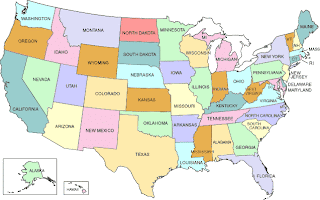2.5 Questions
- If the air pressure in the upper atmosphere is relatively high it will limit the altitude that the warm, moist air can rise to. This high pressure causes the rising air to spiral outwards thus forming a tropical cyclone.
- They form in the tropic of Capricorn throughout November through April.
- The most areas that are at risk in Australia are Queensland and the Northern Territory.
- 6 are likely to cross the Australia’s coastline per year.
- The other names for tropical cyclones are Typhoons and Hurricanes.
- Tropical cyclones develop in the tropical regions of the world. Heat from the sun causes warm, moist air to rise into the atmosphere. As the air rises, a low pressure system forms and condensation occurs, which releases latent heat causing the air to rise further into the atmosphere is high, then the rising column of warm air will spiral outwards in the upper atmosphere and air will rush from the surface to replace it, forming a tropical cyclone.
- The eye of a tropical cyclone is the middle where there is a pipe-like hollow centre.
-

- The tropical cyclone is downgraded to a tropical storm when it moves to cooler water and loses its energy supply of warm, moist air.
2.6 Questions
- 1974
- They set up evacuation and medical centres
- The National Disaster Organisation is a federal government body and it became involved with cyclone Tracy to help fix up basic facilities to Darwin
- To save lives and evacuate the town so no one is left during the destruction.
- 80.459% of Darwin’s population were evacuated
- Houses in all cyclone-prone areas of Australia must be to strict building codes to withstand cyclone.
- On the 29th of August Hurricane Katrina hit the Gulf of Mexico and the state of Louisiana in the United States. It killed over 1400 people and flooded large areas of New Orleans
- When the hurricane hit, the storm surge combined with the low-lying nature of the New Orleans meaning that 80% of the city became flooded.
- All levels of Government were criticised for the slow and disorganised response to the hazard
- The NDO was quick and organised to send out food supplies and medical services while the FEMA was criticised for being slow and took days to send out food supplies
-

- Cyclone Tracy was moving at a fast speed South-East straight through Darwin
2.7 Questions
- On the 20th of March, the eye of Cyclone Larry crossed the coast near Innisfail between 6:20am and 7:20am.
- The communities experienced the greatest damage because it Cyclone Larry caused major flooding and left many communities isolated for several days.
- Public infrastructure are things such as roads, rail and air transport that the public uses. The damage was brought on the infrastructure made it very difficult to transport necessities such as food, water and shelter to the isolated areas.
- The total damage bill as AU $350 million.
- Cyclone Larry destroyed 85% of the banana crops in North Queensland. It left thousands of people without employment and $298.4 million were lost from the destruction of the crops.
- The Emergency Management Australia and State Emergency Service both help to make information brochures on natural hazards and created community workshops to ensure that people are well prepared for natural hazards.
- Emergency Management Australia, State Emergency Service, Australian Defence Force, charities and government departments.
- They helped the coordination of the recovery effort and helped provide large quantities of resources needed to remove danger and repair damage.
- Major General Peter Cosgrove. He would need to have good leadership qualities and be able to organise large groups of people to help with the recovery effort. He would need patience as the recovery would take time.
- It caused destruction to many people’s homes and made a lot of people have no job and limit there income.
- It would interrupt the supply of bananas for weeks and maybe months as so much of the crop was lost and many factories exporting the bananas would be impossible to get to with the flooding.
- 800km
- 66.6 km/h
- It was downgraded to a tropical low at 1am on March 20th. This is because the wind had lost its momentum that it gained over the sea.
- It travelled around 1000km inland before it receded.
No comments:
Post a Comment